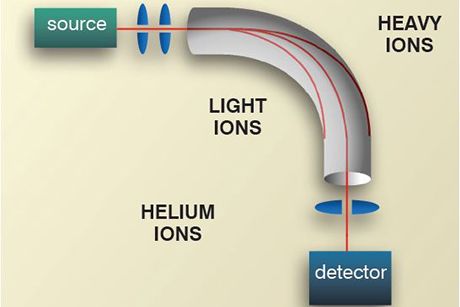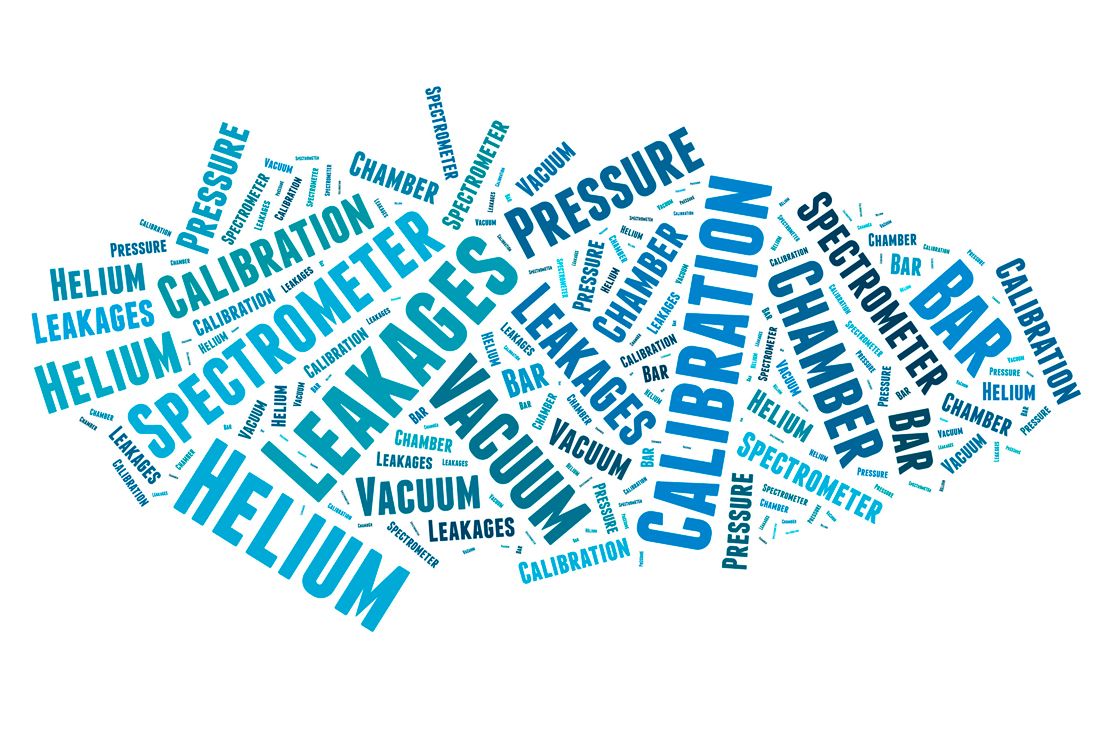The helium leak detection test, by means of a mass spectrometry, is objective as it does not depend on the operator’s evaluation and its accuracy ensures a high level of reliability.
Furthermore, the possibility to recover the helium used during the tests reduces daily consumption and costs.
The focus of the helium leak detection system is to perform a global leak test on a customer’s component and to detect leaks in a range from 5.0 x 10-3 mbar*L/s to 5.0 x 10-8 mbar*L/s. The system automatically verifies the tightness of the components by using the technique of the global test under vacuum chamber. During this test, the component is placed inside a vacuum chamber, then both the component and the vacuum chamber are evacuated up to the value needed for the test. The component is then pressurized with a tracer gas. Utilization of the mass-spectrometer leak detector allows the system to detect the total flow, due to all the leaks of the part being tested. From this process, a final quantitative measurement is obtained. The gross leak test is followed by the main test, with the purpose of reducing the risk of contaminating the chamber with large amounts of helium in case a gross leak is present.
How does the mass spectrometer work?
To simplify, the mass spectrometer transforms the measurement of the mass of helium into an electric signal. To do this, the air that enters the spectrometer is ionized and guided into a curved tube that is immersed in a magnetic field. For a given value of the magnetic field only helium ions go through, while the others are destroyed. The electrical current produced by the helium ion flow, is measured to quantify the leak.

Why helium?
-
Helium is the second lightest element after hydrogen: it can rapidly penetrate small leaks up to 10−11 mbar*L/s whereas heavier elements cannot.
-
It is a noble gas: it is inert and does not react with other gases, or with the part being tested.
-
Helium is ecological: it is colorless, odorless, tasteless, non-toxic, and does not cause any problems in case of dispersion into the environment.
-
It is present in the atmosphere only in small quantities (5 ppm), thus making the background noise for the leak detection instrument very low; making it highly “mass-spectrometrically” separable from other gases.
-
Helium can also be recovered in recovery systems, which will allow customers to reduce the risk of running out of stock, and reduce the quantity of helium needed to be purchased.
General description of helium leak detection systems
Every helium leak detection system provides:
-
One or more vacuum chambers, with manual or automatic lids, assembled on a welded and painted steel frame. The access to the chambers is usually protected by light curtains.
-
Test fixtures to connect the components under test to the process circuit of the system.
-
Vacuum pumps which are needed to maintain the chamber(s) under vacuum, the component under vacuum, and to perform the analysis.
-
One or more leak detectors (Mass Spectrometers).
-
Electric and pneumatic panels.
-
An industrial PC, provided with 15” touch-screen color monitor, which performs HMI functions while a PLC provides for process supervision
-
The supply can also include a helium recovery system suitable to the capacity needed.
Helium leak detection can be applied to a wide variety of industrial fields such as:
-
Refrigeration
-
Air conditioning
-
Automotive
-
Aerospace
-
Fire extinguisher
-
Valves
-
Food packaging
-
Pharmaceutical
-
Petrochemical
-
Energy
-
Microelectronics
